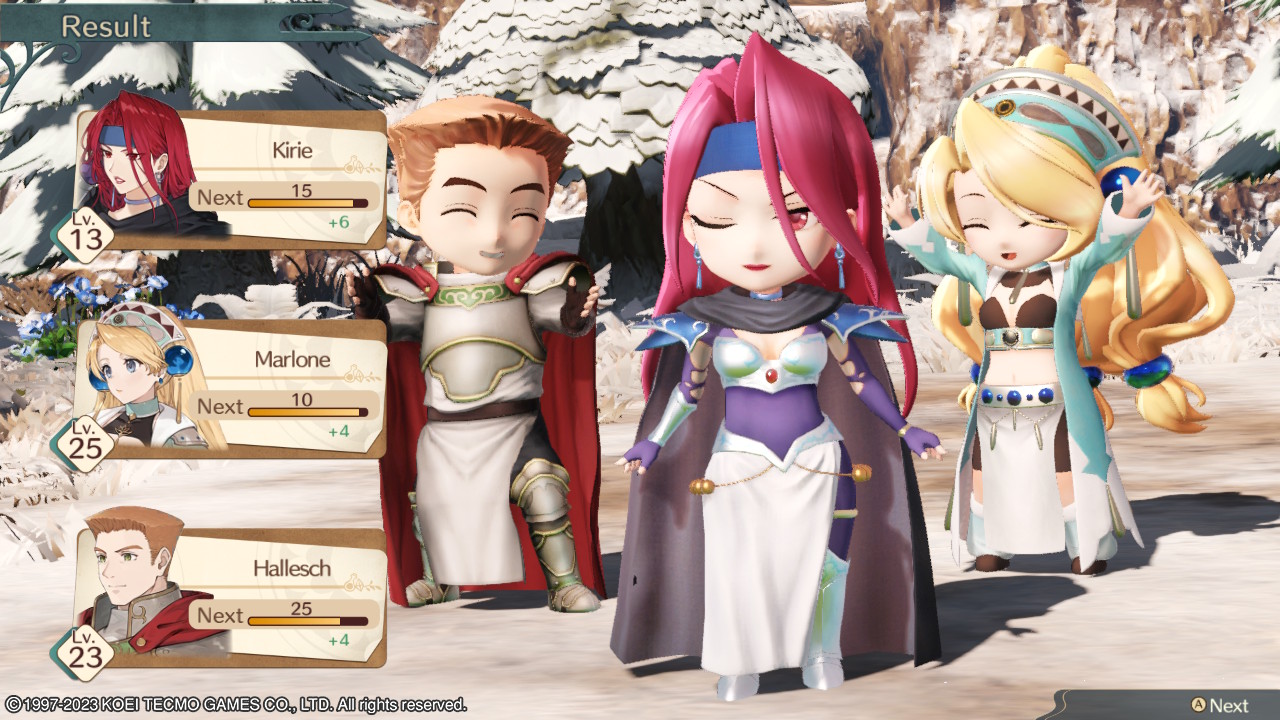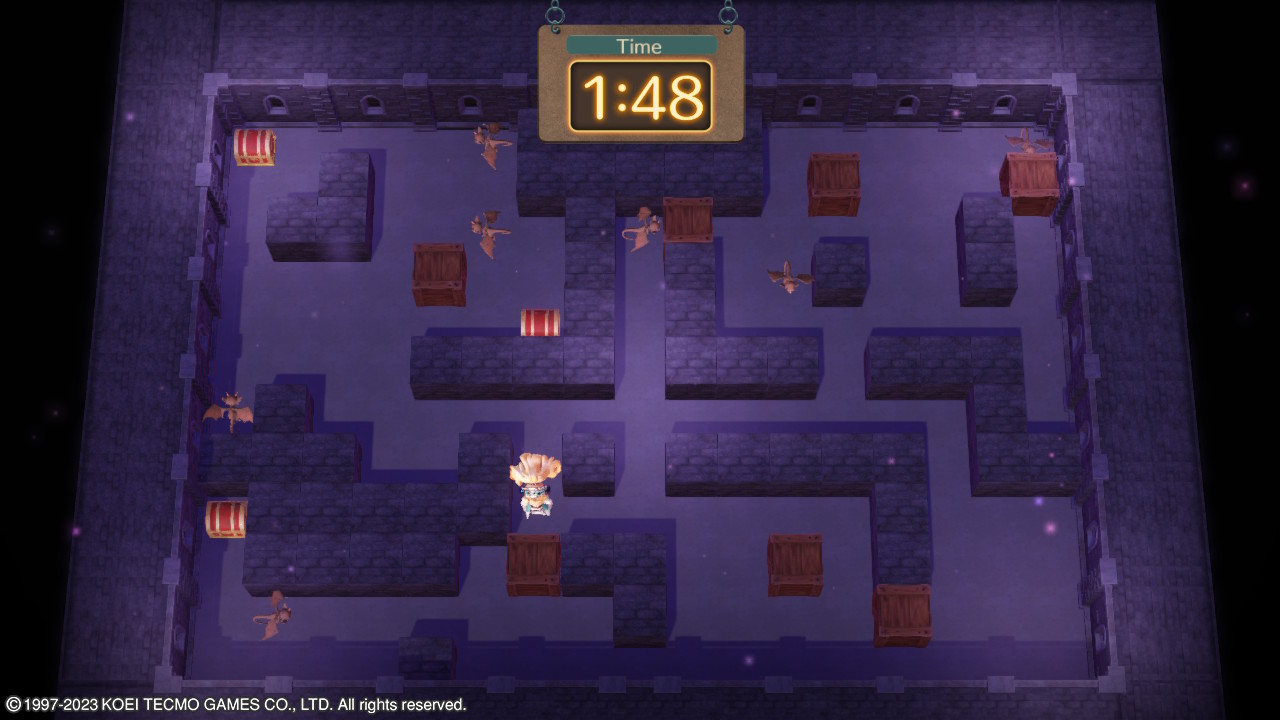Platforms:
PS4, PC, Nintendo Switch, PS5
Released:
July 13, 2023
Publisher:
Koei Tecmo
Developer:
Gust
The grand city of Salburg is an adventurer’s paradise. Great wars have been won here, demonic villains vanquished, and epic prophecies fulfilled. These, however, have nothing to do with the story of Atelier Marie Remake: The Alchemist of Salburg, a reconstruction of the PlayStation classic that established this series of cosy RPGs when it originally released almost a quarter of a century ago. With a focus on crafting, resource management, relationship-building, and light combat, Atelier games take a more laid-back approach to the traditional role-playing experience. As a rule, they’re bright and relaxing. This return to the series’ roots embraces the vibrancy and simplicity of the original title, while attempting to streamline some of its more dated elements.
In Atelier Marie Remake, you play as the alchemist Marie, who is failing in school and facing expulsion. The exasperated Professor Ingrid eventually issues Marie with a final exam: if she can create something exceptional using the power of alchemical synthesis within five years, she’ll be allowed to graduate. Marie is set up with an alchemist’s shop (the titular atelier) and is then free to spend her time researching, exploring, and figuring out how to nail the exam.
I was able to preview the first year of Marie’s quest back in May, and found it utterly charming. Having now journeyed with Marie from her first days as a budding alchemist through to her graduation, I’ve got a better sense of the title’s scope. It’s a laid-back RPG adventure with item crafting at its core. There’s no sprawling open world to explore or massive roster of enemies to fight, just a solid loop of exploring, gathering, and synthesising.

Rather than presenting a linear narrative to follow, Atelier Marie Remake encourages players to pursue their own goals. A brief tutorial introduces you to the mechanics and key locations in Salburg and its surrounds, guiding you through the basic gameplay loop. You’ll begin at the atelier, where you can synthesise materials and items to complete quests and gain experience.
From there, you can explore Salburg: heading to the inn allows you to pick up rumours and quests, the academy lets you purchase alchemical equipment and learn recipes, and the weapon shop provides gear for Marie and the various adventurers she can hire throughout the city. Once you’ve assembled a party, you’ll venture out into a handful of locations on the world map where you can gather ingredients and battle enemies. When Marie’s basket is full, it’s time to head back to the atelier, rest up, and repeat the process.

It’s a simple gameplay loop, but becomes wonderfully satisfying once you’ve decided on particular alchemical recipes to pursue or adventurers to befriend. You’ll gradually chip away at your personal goals as the seasons pass, getting stronger and more efficient each day. There are also extrinsic goals set by Professor Ingrid that provide some structure if needed, as well as special character moments that can trigger based on conditions listed in your events log.
These take the form of cutscenes or crafting requests from your party of adventurers and the citizens of Salburg, and provide a nice bit of context and worldbuilding. I particularly enjoyed a series of conversations with Salburg’s weapon shop proprietor, in which Marie can choose to help him pursue his dreams of developing a beautiful singing voice and growing a full head of hair over the course of a few in-game years. Other scenes elaborate on the world’s political struggles and different characters’ personalities, such as Ruven’s relentless optimism or Schwalbe’s cynicism.
Crafting items in Atelier Marie Remake is compelling, if lacking in complexity when compared to more recent entries in the series. Marie can purchase alchemy recipes from the academy, research them in the library, or learn them through rumours. You can then synthesise from these recipes at the atelier once you’ve gathered the required ingredients, which uses some of Marie’s mana and increases her fatigue level. The higher your fatigue, the more likely you are to mess up the synthesis and end up wasting your ingredients.

Like most other actions, crafting also costs time, with more complex recipes taking up to a month out of the calendar. It’s satisfying trying to figure out optimal ways to synthesise specific items, such as the game’s rare and valuable Philosopher’s Stone. This fabled trinket requires four obscure ingredients: some of these you can craft, but one can only be sourced from a particular gathering area during an eclipse, which happens on a single day each year. I finally managed to nab one during the final year and raced against the clock to complete the synthesis just in time.

Venturing out into the world allows Marie to scour different locations for ingredients. You’ll hear rumours in town occasionally that unlock new areas, each with its own unique materials to gather and enemies to battle. Combat is a fairly traditional turn-based affair, with Marie and up to two hired adventurers each having access to attacks, items, defensive stances, and unique abilities. Positioning also affects your party’s stats, with magic-focused characters acting more effectively from the back row and physical attackers preferring to be in front.
It’s clear that combat is not the main focus of Atelier Marie Remake. There’s not a tonne of enemy variety, mostly pulling from the same types of beasties you’d see in an early Dragon Quest game. The game’s handful of boss battles are also entirely optional, though they hold some of the rarest alchemical ingredients available. The experience has been majorly streamlined from the original title, even going so far as to add an auto-battle mechanic to limit time spent grinding.

At certain points, minigames can be played to prevent you losing some of your ingredients or to help earn extra cash. Collecting a rare Gold Salmon risks triggering a game where you have to save it from hungry bears, while synthesising cheese might tempt a mouse to snatch it and force you to play a chasing game to win it back. While they break up the gameplay a bit, they’re definitely the kinds of games from that era where every RPG insisted on featuring a few minigames – simple, quick, and pretty annoying. It feels like they’ve only really been included for nostalgia reasons, and although they’ve apparently had their controls updated it would have been nice to see something a little more interesting done with them.
Five in-game years (or around eight real-world hours) is the perfect amount of time to spend in Atelier Marie Remake, letting you experience most of what Salburg has to offer without outstaying its welcome. At the end of the fifth year, Marie’s actions over time determine which of the several ending cutscenes you’ll see. Completing the game for the first time also unlocks a harder difficulty mode, a new game plus, an arcade where you can play any of the minigames, and a gallery of the game’s artwork. There is an “unlimited” gameplay mode available in this edition for those who feel the time pressure renders things decidedly un-cosy, but it feels like Marie’s final exam at the end of the fifth year is a natural ending point. Atelier Marie Remake is a short-and-sweet adventure for RPG fans, a lovely and cosy game to play over a wintry weekend.
7
Good
Positive:
- Compelling core gameplay loop of gathering and crafting
- Faithful but streamlined interpretation of a classic JRPG
- Some nice worldbuilding and characters
Negative:
- Lacks the complexity of other games in the series
- Minigames are hit and miss
A simple but endearing experience, Atelier Marie Remake: The Alchemist of Salburg is a nostalgic adventure that does justice to the satisfying crafting mechanics that have represented the series’ identity for nearly a quarter of a century. While it might lack the complexity and depth of more recent entries, and some of its “classic” elements feel a little dated, it provides a solid core gameplay loop within a charming package. It’s a bite-sized nostalgic RPG romp that feels cosy as heck and never outstays its welcome.











